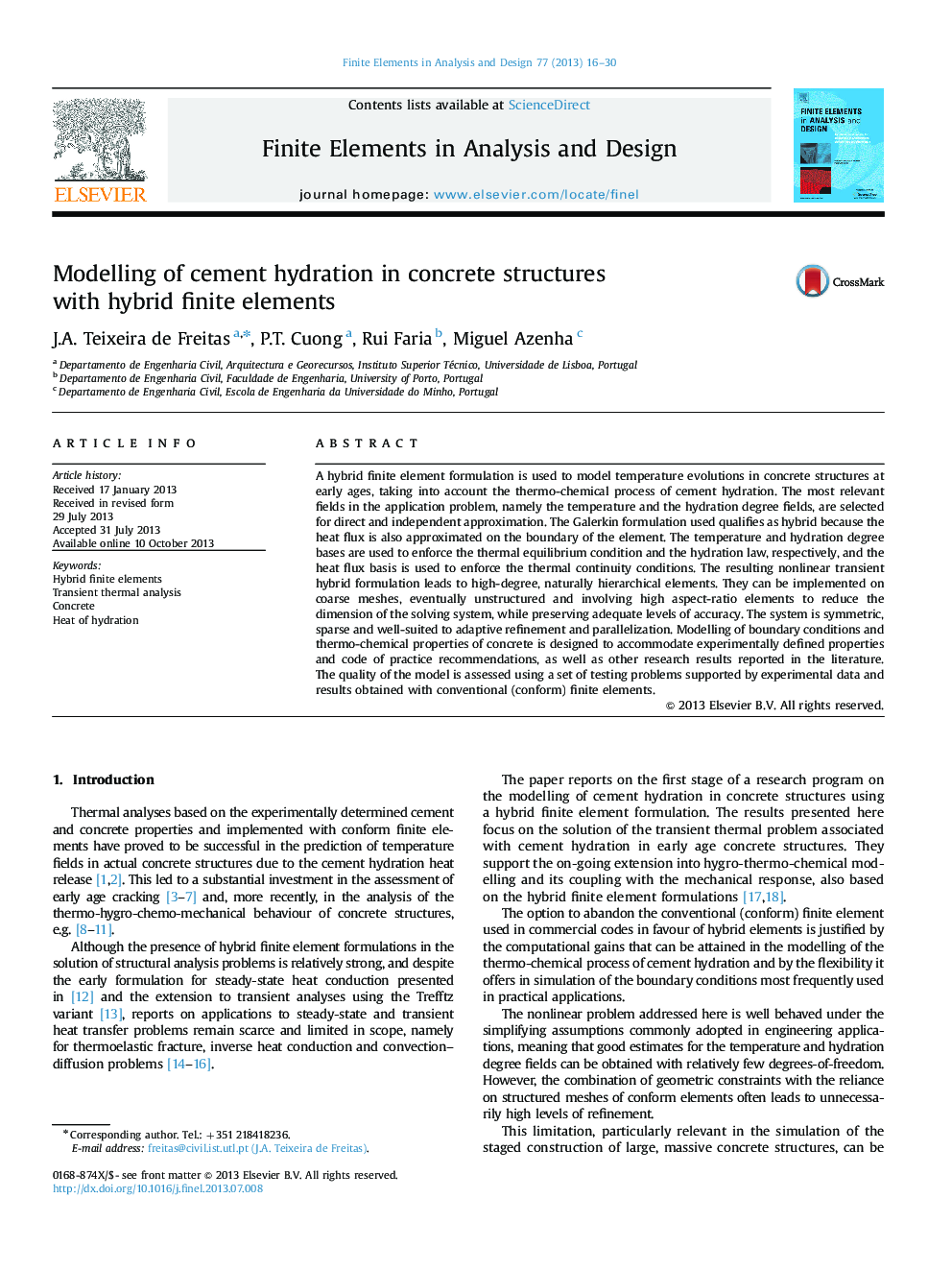| کد مقاله | کد نشریه | سال انتشار | مقاله انگلیسی | نسخه تمام متن |
|---|---|---|---|---|
| 513818 | 866654 | 2013 | 15 صفحه PDF | دانلود رایگان |

• A hybrid FE formulation is applied to the modelling of cement hydration in concrete.
• The accuracy of conventional FE is recovered with simpler meshes and fewer variables.
• Unstructured meshes and uncoupled FE bases simplify the modelling of staged construction.
• The hybrid FE formulation is well-suited to adaptive p-refinement and parallelization.
• Performance is assessed using experimental monitoring data and conform FE solutions.
A hybrid finite element formulation is used to model temperature evolutions in concrete structures at early ages, taking into account the thermo-chemical process of cement hydration. The most relevant fields in the application problem, namely the temperature and the hydration degree fields, are selected for direct and independent approximation. The Galerkin formulation used qualifies as hybrid because the heat flux is also approximated on the boundary of the element. The temperature and hydration degree bases are used to enforce the thermal equilibrium condition and the hydration law, respectively, and the heat flux basis is used to enforce the thermal continuity conditions. The resulting nonlinear transient hybrid formulation leads to high-degree, naturally hierarchical elements. They can be implemented on coarse meshes, eventually unstructured and involving high aspect-ratio elements to reduce the dimension of the solving system, while preserving adequate levels of accuracy. The system is symmetric, sparse and well-suited to adaptive refinement and parallelization. Modelling of boundary conditions and thermo-chemical properties of concrete is designed to accommodate experimentally defined properties and code of practice recommendations, as well as other research results reported in the literature. The quality of the model is assessed using a set of testing problems supported by experimental data and results obtained with conventional (conform) finite elements.
Journal: Finite Elements in Analysis and Design - Volume 77, December 2013, Pages 16–30